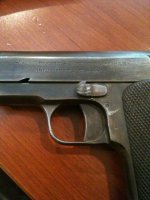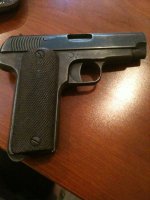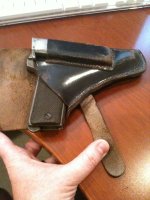Hope this is the right section for this:
Years ago, after my grandfather passed this was found in one of his safety deposit boxes. I really have no information except these photos.
My limited research places this as a Spanish Civil War era piece (?).
Anything you can share would be appreciated.
Thanks,
dsd
Years ago, after my grandfather passed this was found in one of his safety deposit boxes. I really have no information except these photos.
My limited research places this as a Spanish Civil War era piece (?).
Anything you can share would be appreciated.
Thanks,
dsd



